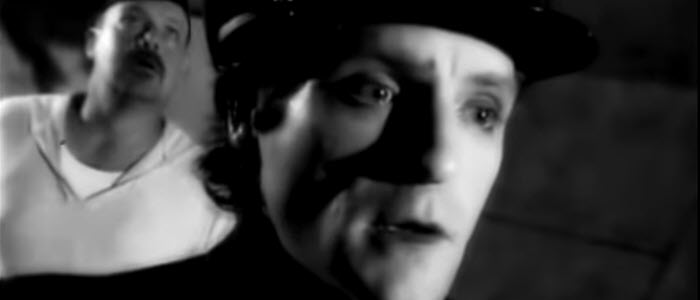The Call of Cthulhu movie from Sean Branney and Andrew Leman and distributed by the H. P. Lovecraft Historical Society is one of the most faithful renditions of an H P Lovecraft story to date.
This is a movie that I wincingly refer to as a labor of love. Just about any creative work that is a labor of love often is not very good. The same thing goes for the phrase ‘this is one for the fans’, which also applies.
The H. P. Lovecraft Historical Society is a business that focuses on Lovecraft fan products, especially related to the Call of Cthulhu role-playing game. Given it is such a niche market, you also have to appreciate that these are people that love the works of H. P. Lovecraft.
Also, the H.P. Lovecraft Historical Society isn’t really a movie production company, though they have produced other movies and audio performances. As a result, their movies are not funded like Hollywood productions, but are best described as entirely independent.
The H.P. Lovecraft Historical Society came up with a style called Mythoscope ™ that attempts to mimic the look of a silent movie era production – black and white, silent and with a music accompaniment. The movie itself is only 47 minutes long. The DVD also includes a 25 minute ‘making of’ documentary. It is not available on Blu-ray.
For all its shortness and indie feel, the story manages to cover the three main parts of the original story – The Horror in Clay, The Tale of Inspector Legrasse and The Madness from the Sea.
The title card list is very impressive, including: Catalan, Croatian, Czech, Danish, Dutch, English, Euskera, Finnish, French, Galician, German, Hungarian, Irish, Italian, Lithuanian, Luxmbourgish, Norwegian, Polish, Portuguese, Romanian, Spanish, Swedish, Turkish and Welsh. Sadly missing are any Asian languages – there is a surprising number of Lovecraft fans in Japan.
Of the parts of the original story presented in the movie, the one I was most impressed with was The Tale of Inspector Legrasse, which is presented from the point of view of two sources: Legrasse himself, and also Professor Webb. It begins at the 1908 American Archaeological Society meeting in St. Louis, which is rendered into the journal of Professor Angell, also present at the time. The Greenland expedition of Professor Webb is surprisingly more vivid than you would expect given the focus of this portion of the story is Legrasse.
The greatest weakness of the movie also happens to be the greatest weakness of the story itself – the appearance of Cthulhu. The film makers had a very hard choice to make – animation or stop-motion. Full on animation in a 2D format would have not worked well with the Mythoscope style. I doubt they could have come up with a good enough 3D solution as the tools and experience in a high quality 3D rendering would have been budget bursting and also may not have integrated well with the style of the movie. That leaves stop-motion animation, which is what they did. The presentation works, but it is still very clearly stop-motion. To their credit, the appearance of Cthulhu in the story was itself sort of a let down.
If you are a fan or scholar of the works of H.P. Lovecraft, this is a must see movie – if not for the fact that it is the most faithful rendition of a Lovecraft story to date. If you want to introduce someone to the works of Lovecraft, it is also an excellent introduction – though you should also first warn them of it being an indie, black and white silent movie.
